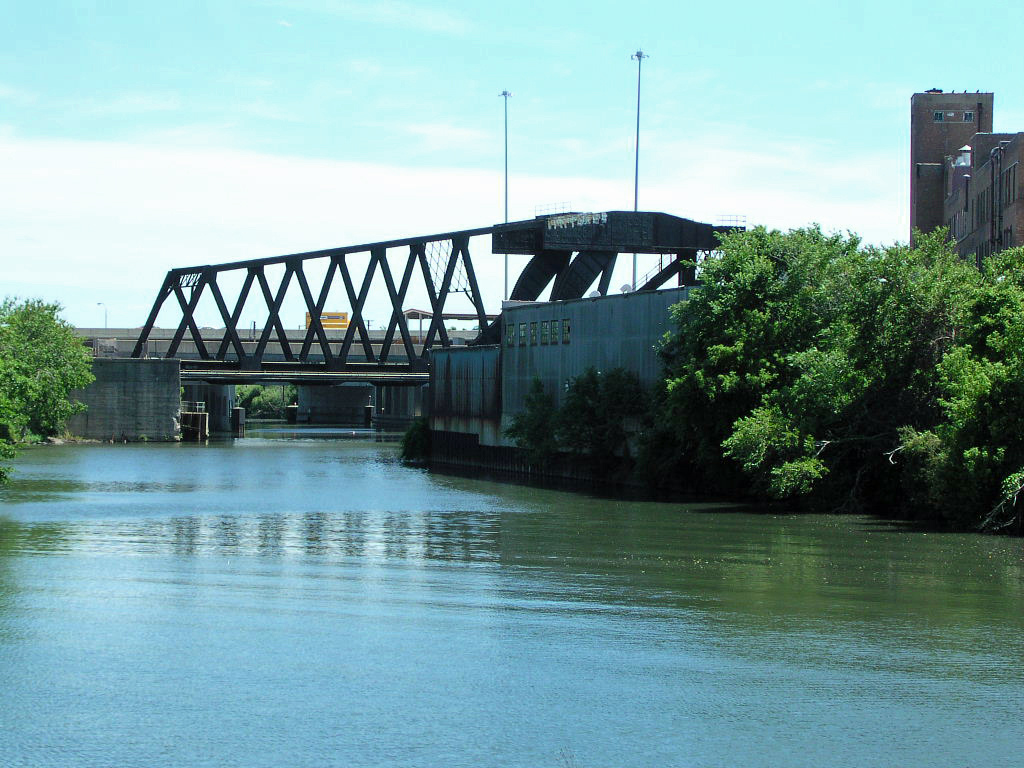A call to delay—not cancel—the U.S Army Corps' restoration plans for Bubbly Creek
July 17, 2015
, By MPC Director Josh Ellis

Flickr user Curtis Locke (CC)
Bubbly Creek
A recent discovery of contaminants in the sediments on a site adjacent to Bubbly Creek – the South Fork of the South Branch of the Chicago River—has put an abrupt halt to the U.S. Army Corps of Engineers’ efforts to restore Bubbly Creek back to a healthy aquatic ecosystem. The recommended plans to move Bubbly Creek restoration efforts forward would cover approximately 44 acres of the channel. According to the U.S. Environmental Protection Agency, Integrys has been operating under a consent decree since 2008 and has submitted plans for sediment sampling, which would begin this fall. It is unknown whether it will even be necessary.
The Leadership Commission of Great Rivers Chicago has encouraged the U.S. Army Corps of Engineers to work with them, City of Chicago, Friends of the Chicago River and other partners to find a path forward for the Bubbly Creek restoration project.
Rather than end the decade-long intensive process that used both local and federal funds, the Leadership Commission of Great Rivers Chicago have asked the U.S. Army Corps of Engineers in the immediate term to delay or postpone the project, rather than cancel it. A decision to end the project, or restart another extended study, would be ill-advised and devastate the potential for this critical and historic reach of the Chicago River system to support healthy wildlife and increased recreational access. The Leadership Commission of Great Rivers Chicago has encouraged the U.S. Army Corps of Engineers’ to work with them, City of Chicago, Friends of the Chicago River and other partners to find a path forward for the Bubbly Creek restoration project.
Up until the early 1800s, the South Fork of the South Branch of the Chicago River—more famously and notoriously known as Bubbly Creek—was a thriving prairie slough, or wetland, meandering through what is now Bridgeport, a neighborhood on Chicago’s Southwest Side. Within the span of a hundred years, infrastructural and navigation improvements of 19th and 20th centuries tilted this complex ecosystem that once was home to dozens of aquatic and terrestrial animals into rapid ecological decline.
The Illinois-Michigan Canal was completed in the early 1800s. By the 1830s, Chicago’s first slaughterhouse was constructed; 30 years later, the city opened its doors to the Union Stock Yards and became the epicenter of the nation’s meatpacking industry. By the turn of the century, the Chicago Sanitary and Ship Canal was complete, the Chicago River was reversed and a turning basin was constructed at the mouth of Bubbly Creek. Coupled with the formation of a Central Manufacturing District, these improvements set the stage for an influx in population to Chicago’s southwest communities and, in turn, drove the 1.25-mile stretch of Bubbly Creek into a stagnant dumping grounds for stock yard entrails—all of which is most notably articulated in Upton Sinclair’s book, The Jungle.
Despite the heavy pollutant loads that entered the waterway during multiple decades, Bubbly Creek played a major role in the city’s early economic successes and regional growth. Nevertheless, the polluted waters became a primary concern as residential housing began to replace industries around the mouth of Bubbly Creek. Over the last few decades, some improvements have been made to reduce the pollutant loads entering the system. By 1939, Chicago’s Stickney Water Reclamation Plant was completed, and began receiving stormwater that had previously been released directly into Bubbly Creek. The Stock Yards closed by the early 1970s, and later that decade, restoration of the Chicago River began receiving signification attention. In 2005, the federal government authorized the U.S Army Corps of Engineers to conduct a feasibility study to evaluate ecosystem restoration projects for Bubbly Creek.
The primary goal of the partnership is to “restore a functional backwater habitat and riparian buffer zone for resident and migratory birds and spawning fishes.” During the U.S Army Corps of Engineers’ 10 years of research, data collection and analysis, the Corps assessed five alternative plans and selected one as the most feasible, in terms of providing restoration benefits at minimal cost without hindering the quality of the project’s efforts. The recommended plan to restore Bubbly Creek as a functional backwater includes restoring the Creek’s substrate (i.e. creek bottom), riverbank, plants that live below and above the water’s surface, and woody debris within and around the Creek’s edge.
Bubbly Creek, if transformed into a self-sustaining backwater habitat, would enhance the region’s biodiversity. Increased native vegetation along the edge and riverfront of Bubbly Creek will offer new habitat for migratory birds and spawning fishing. A naturally functioning backwater system will remove silt from the Chicago River system, and in effect, improve the conditions for aquatic plants and algae—a food source for many other creatures that live at the bottom of the river. Moreover, restoring Bubbly Creek into a healthy ecosystem and open space would become a tremendous asset to the City, historically and culturally connecting Chicagoans to our region's rivers and riverfronts.